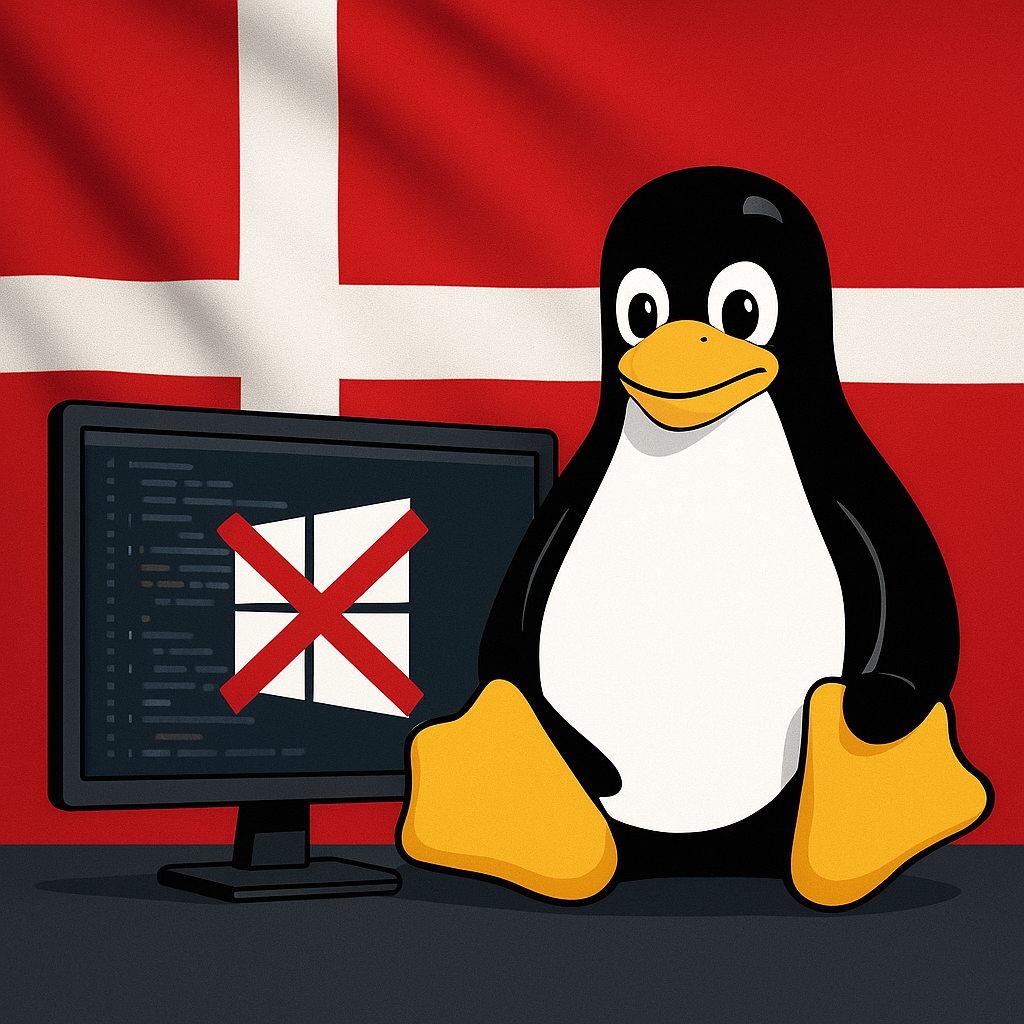🇩🇰 Danish Government Shifts to Linux – A Smart Move with Hidden Risks?
In a bold and future-oriented decision, Denmark’s Agency for Digital Government has announced a plan to transition from Microsoft Windows and Office to Linux and LibreOffice. The shift is part of a larger effort to reduce dependency on proprietary software and embrace open standards and open-source alternatives.
But while this is a progressive and cost-effective step, it also comes with both challenges and unforeseen cybersecurity implications.
The Benefits of Going Open Source
There are many advantages to this decision:
- Cost Efficiency: Eliminating costly Microsoft licenses can save millions of Danish kroner over time.
- Sovereignty and Control: By using open-source software, the government avoids vendor lock-in and gains greater control over its digital infrastructure.
- Transparency and Security: Open-source code can be audited by anyone, potentially increasing trust and reducing hidden backdoors or telemetry.
- Flexibility: Linux systems are highly customizable and often more efficient on older hardware.
This move mirrors similar actions taken by other governments and institutions over the years — like Munich’s initial Linux migration or France’s adoption of open-source in the military sector.
The Migration Challenge
However, the human aspect of this change shouldn’t be underestimated. Many public employees are deeply familiar with Windows and Microsoft Office. Transitioning to Linux desktops and tools like LibreOffice will require:
- Training programs
- Documentation and support
- Patience during the adaptation period
This learning curve could lead to temporary productivity loss — a factor that must be managed carefully through strong onboarding strategies.
🛡️ Linux as a New Target?
A crucial and often overlooked consequence of such transitions is the shifting threat landscape.
“If more governments and major institutions adopt Linux, attackers will follow.”
Historically, Linux desktops have enjoyed a degree of “security through obscurity” — not because they are invulnerable, but because attackers focused primarily on Windows, which dominates the desktop market.
However, this shift means:
- More Linux systems in high-value environments (like government agencies)
- Increased attacker interest in Linux vulnerabilities, malware, and privilege escalation techniques
- More Linux-targeted phishing campaigns and social engineering
🔐 The Security Paradox
Linux is often seen as more secure by design. Features like strict user privilege models, package repositories with signature verification, and SELinux/AppArmor profiles can offer enhanced protection. But more usage equals more risk:
- Unpatched third-party software becomes a bigger problem
- Threat actors may begin crafting more Linux-specific rootkits and ransomware
- Public institutions may lack deep Linux security expertise at scale
A Shift Worth Watching
Denmark’s move may signal the beginning of a larger trend. If successful, other EU countries and institutions may follow suit, especially in the context of digital sovereignty and tightening IT budgets.
But with great power comes great responsibility. As Linux gains adoption, defenders must be proactive in adapting their cybersecurity strategies to cover this new threat surface.
What do you think? Will Linux dominate the public sector in the next decade, or will it remain a niche choice? And are we prepared for the security consequences of such a shift?

